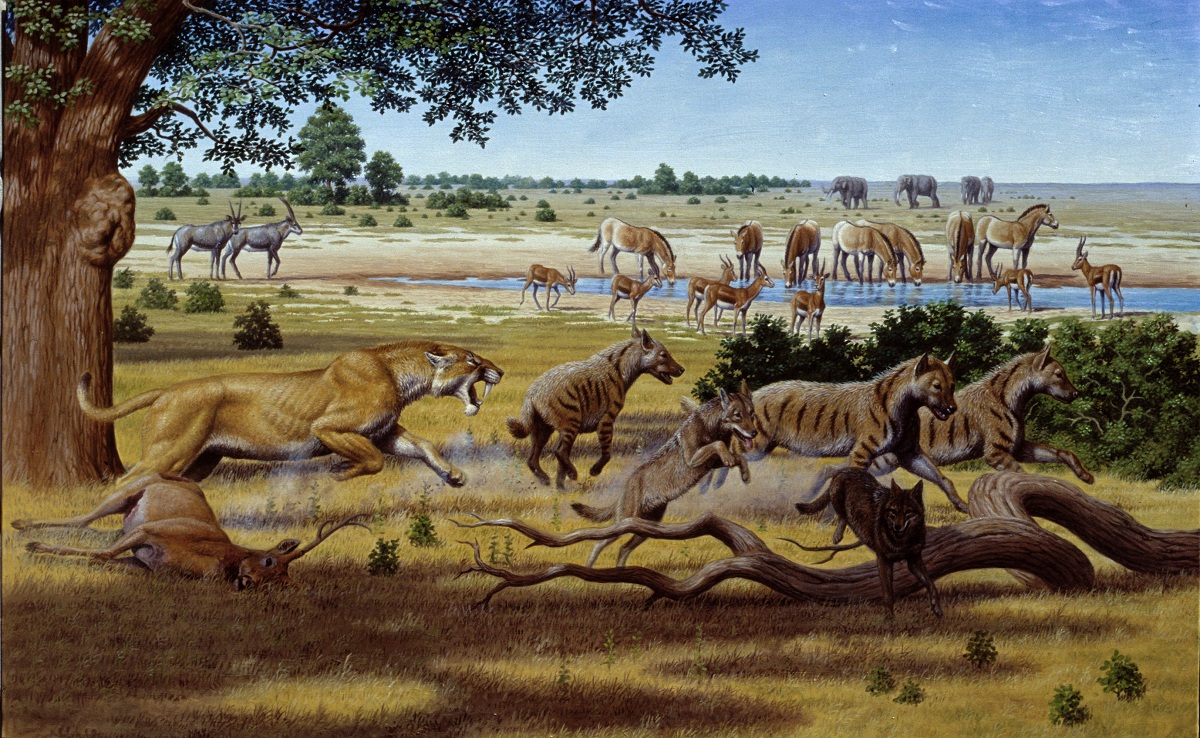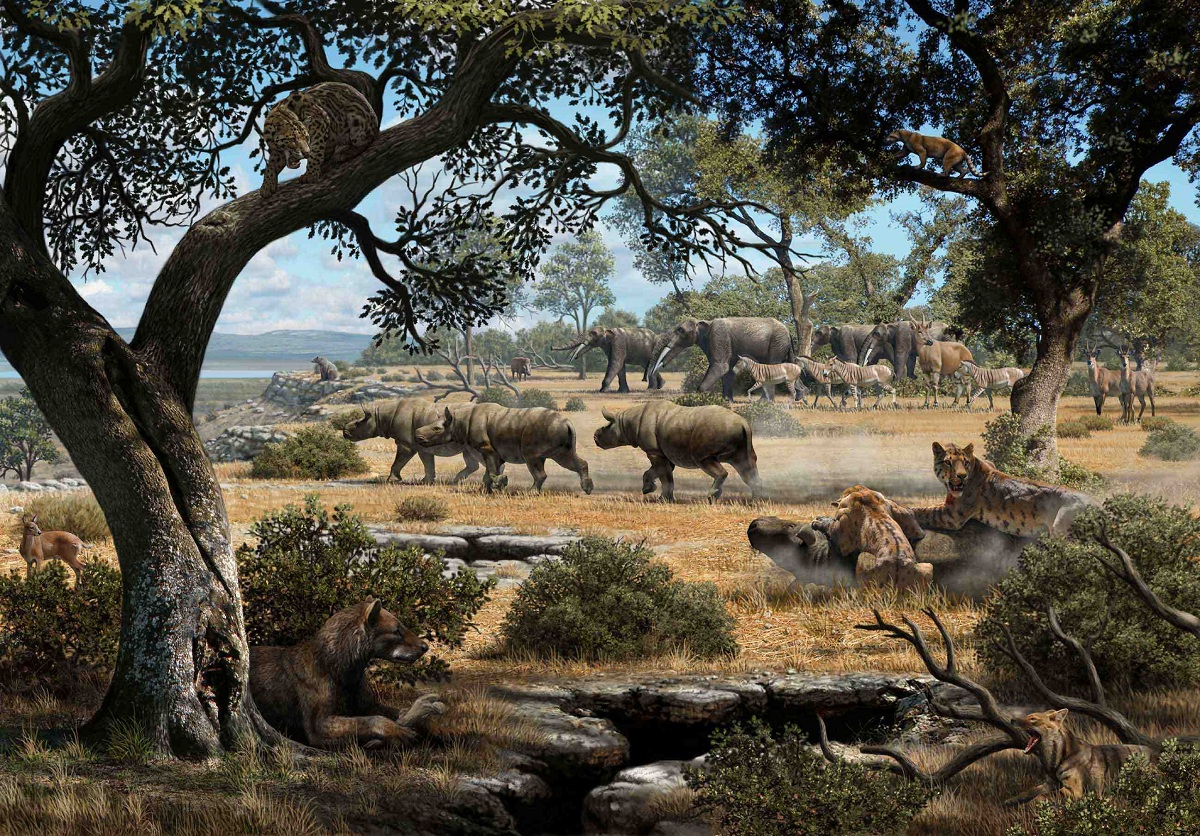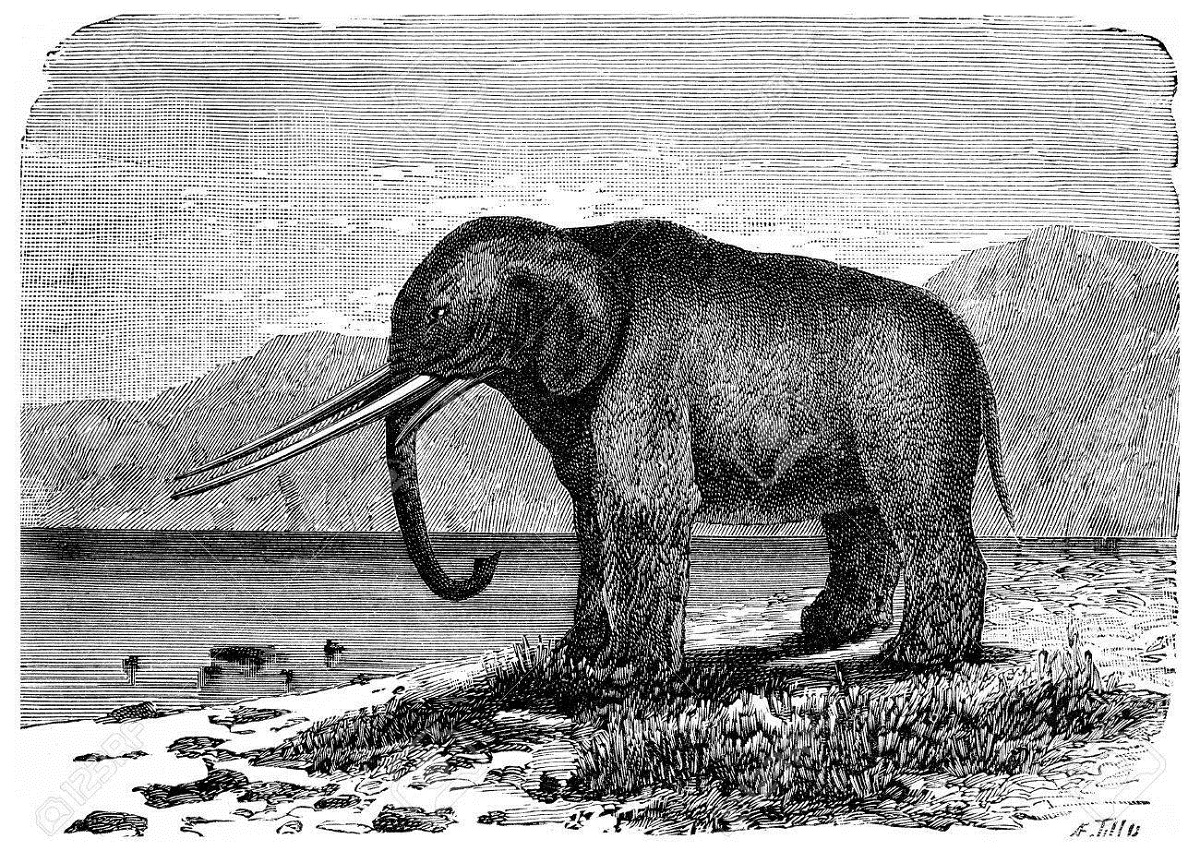
El Miocene was one of the two eras that formed the Neogene period within the Cenozoic era. It is a time when great changes occurred at the climatic, biological and orogenic level. The climate had various fluctuations in temperatures and this caused the successful development of certain species of animals and plants that could diversify and spread over large territories. The Miocene fauna it was characterized by having animals that coexisted in the same ecosystems and others that could develop widely.
In this article we are going to tell you about all the characteristics, evolution and species of the fauna of the Miocene.
Key features

Throughout this time there were certain fluctuations in global temperatures. At the beginning of the Miocene we found quite low temperatures that rose slowly with the passage of time. About halfway through the season, optimal warm temperatures were reached for large numbers of plant and animal species to successfully develop.
The case of mammals, birds and reptiles and amphibians were the ones that could diversify the most throughout this period. It is known thanks to an important fossil record that there are specimens that inhabited our planet at that time.
The Miocene was an epoch that lasted approximately about 8 million years ago and began approximately 23 million years ago. During all this period of time the orogenic activity was very intense, causing various mountain ranges to grow. In some specific places on the planet this orogenic growth had important consequences. One of them was the Messinian salt crisis.
Thanks to these orogenic changes and the warmest optimal temperatures throughout the entire planet a large part of the mammals, birds, reptiles and amphibians could be diversified. There are fossil records that large numbers and varieties of mammals existed at this time. All fossils are of different sizes and food predilections. It is known that mammals were the group of animals that experienced the greatest development and diversification.
Flora

Before going on to analyze the fauna of the Miocene, we must also consider the flora. This is due to the fact that a large part of the animals that were present in the Miocene were herbivores. Much of these animals and plants are preserved today, forming an important part of the great diversity of ecosystems.
During the Miocene it was observed a significant decrease in the extent of forests and jungles. This is due to the reduction in temperatures that occurred initially at the beginning of the time. One of the main reasons why plant spaces were reduced was due to the reduction in rainfall worldwide. For this reason, many plant species had to adapt to these low rainfall conditions.
Because of this, herbaceous plants and those that are small in size are those that began to dominate the planet. These are plants with great capacities to withstand long periods of drought and frost. During this time angiosperms flourished. They are those plants with covered seeds.
Herbaceous are those plants whose stems are not woody. They are flexible stems with a green color and green leaves. They are found in groups and are quite resistant to droughts and low temperatures. On the other hand, we find the chaparral. The chaparral is a type of biome in which a particular type of vegetation known as chaparros develops. These short trees are small woody-type shrubs that are capable of surviving in extreme environmental conditions. Cacti and bushes also developed in great proportion.
Miocene fauna

During this time it is indisputable that the group of animals belonging to the Miocene fauna that most developed were mammals. Both small mammals such as the rodents group managed to evolve, to large mammals such as some marine ones. The group of birds also experienced a great expansion in range and abundance. All this is known thanks to the fossils of specimens that have been found all over the planet.
The terrestrial mammals that abounded during the Miocene fauna are the following:
- Gomphotherium (extinct): it is a large mammal that had its habitat in the territories of Eurasia. It reached 3 meters in size and one of its main characteristics is that they had two pairs of fairly long and resistant tusks.
- Amphicyon: is another species that was extinct today. His appearance was that of an animal between dog and bear. With a fairly compact body, it had 4 thick limbs and a long tail. They could measure a meter in height and two meters in length and weigh more than 200 kilos.
- merychippus: there was today this animal is extinct. It was a small animal and is characterized by having 3 fingers on each limb. The specialist in moving around in herds to graze. In appearance it was similar to today's horses and zebras.
- Astrapotherium: another animal that is extinct today. It was one of the largest mammals, weighing up to a ton and measuring 3 meters in length. Among its main characteristics was its teeth that indicated that it was herbivorous. They could move through marshy and dry terrain thanks to large limbs.
- Megapedete: another species that belongs to the order of rodents. Its size was very small although it reached 3 kilos. The body was similar to that of a hare and had quite powerful and developed hind limbs. On the other hand, its front limbs were quite short.
As we have mentioned before, aquatic mammals also diversified quite a bit during this time. In the group of birds there were large specimens and others that developed their survival instinct quite a bit. As for reptiles and amphibians, those predatory carnivores predominated.
I hope that with this information you can learn more about the fauna of the Miocene.